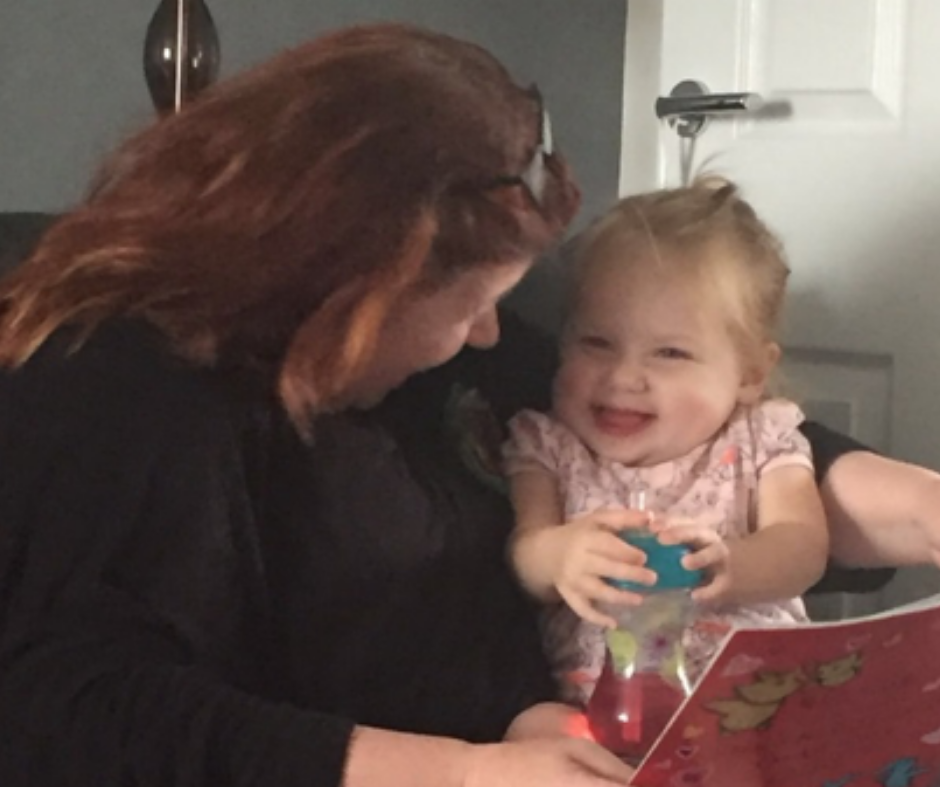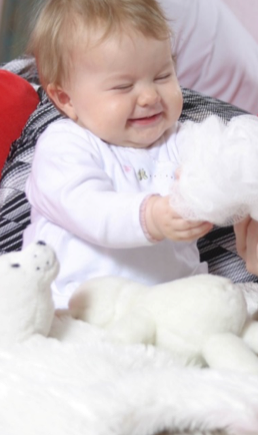Why touch is essential to a baby’s development


Touch is one of the nicest senses to share. The touch of people close to babies can have a hugely calming and reassuring effect on them. Touch is the sense that children will use to engage with every new item, material, space and person they are introduced to. It is the sense that will lead them to investigate and discover new and exciting properties, ways to manipulate, and an understanding of texture. When children are manipulating resources, their hand-eye coordination is being stimulated, their thinking skills are being developed and their sense of wonder is being promoted.
Of all the sensory experiences, touch is the foremost means of letting a newborn baby know he is loved. It is essential to development. As well as touch being a sense of comfort, it offers a sense of security and reassurance in new situations and environments. Holding, caressing and massaging is an intimate way to build a strong and lasting relationship with your baby.
Your new baby
When your baby enters the world, you will be in close physical contact with him. Most new parents automatically touch, caress, and cuddle their new baby. This intimacy encourages bonding. The sense of touch being stimulated between you and your child is a lovely and most natural way to spend your first hours together.
How you can help
- While your baby is awake, interact with him. Chat to him, look at him and be near him. If you are packing the washing machine, let him watch and tell him what you are doing. If you are watching a television programme then involve him, by sitting close and looking at him and tickling him.
- Remember that to be close and build a relationship with your baby does not mean you have to pick him up and hold him all the time. It means you have to relate to him, involve him and engage him.

Using his mouth to explore
When your baby uses his sense of touch, the sense nerves send signals to his brain stimulating its growth. By using his mouth to explore objects your baby’s brain will be developing new connections and interconnections. Your baby is not looking to eat the objects he is placing in his mouth, rather, he is trying to explore them. Remember that it is fine for him to explore appropriate objects using his mouth, but always be on hand to ensure that unsuitable items are not explored in this way. Be gentle when encouraging your baby to give up an unsuitable object – try not to make the removal a negative experience.
How you can help
- Keep his environment safe and free from any items that will cause him harm.
- Offer him objects and toys that can be explored using his mouth. If it shouldn’t actually be put in his mouth, then show distaste by your expression and gentle but firm tone of voice.
- Give him access to a range of tasting opportunities to stimulate his sense of touch.He will find it pleasant to use his mouth to explore items such as a spoon with milk on (or other foodstuff, allergy and age-dependent) or a bowl of small pieces of bread.
Routines
Every time you change a nappy or put your baby down to sleep you promote bonding. You do this by placing him in a physical area that is warm, soft and cosy. The softness of a wipe, the coolness of a cream, the warmth of a clean nappy, are all experienced through his sense of touch. Having experienced this routine he has had his needs met and he feels secure that he is cared for. As his internal model of the world evolves he can also predict what may happen next and be comfortable in his predictions.
How you can help
Every family approaches these routines in a different way – there is no perfect answer. Getting to know your child and what he needs and enjoys will help you to create the routine that is best for you both. Remember to take the opportunity to build a close relationship by including touch and closeness as a part of these routines.
The environment
Encourage your baby to experience a variety of textures visually and through touch (by picking up, feeling and shaking the object, for example). Do be aware of any sensitive skin allergies when handling materials though.

How you can help
- Gather some collections of textured items, such as a set of natural items – fir cones, a wooden spoon, driftwood and pebbles. Let your child explore them.
- Introduce new fabrics on a regular basis. They could be scarves, a cushion cover or a towel, for example.
- Add items such as sand, bubbles or pebbles into a small bowl of water for him to explore.
- Go outside and touch the flowers, grass, bushes and tree bark.
Manipulation Skills
In the first three years of life your baby will have gained a great deal of information and knowledge from ‘touching’ his world. From three months old he may be reaching and grasping for objects. Introduce a wide variety of textures for him to play with. He will soon pick items up, lifting them to suck, using his tongue and lips to touch and gain information from them. By nine months he will not just pick up but have the ability to let go and drop items. If you place textures below and around him, he will happily try out his newly acquired skills! As well as the touch sensations that he will experience he will also hear the sounds that the objects make when held, manipulated and dropped.
As your baby learns to eat finger foods and feed himself he will be exposed to a new range of manipulating opportunities that he will get thoroughly immersed in (quite literally, at times!). He will be keen to build with bricks – introduce cardboard, wooden and plastic bricks to allow him to explore a range of textures.
When moving into his second year your child will continue to use hands-on adventures to gain insights into his world. During his adventures there will be spaces and equipment he should not touch. This will take time to establish and until he is into his third or even fourth year, he will have trouble remembering limits and boundaries. Be patient with him, explaining why you have said ‘no’. Repeat this often and eventually he will respond to the boundaries you have set. This will allow him, in his third and fourth years, to use his well-developed sense of touch to make more sense of his environment. He will continue to manipulate the objects he comes into contact with during each of the play situations he is involved in, learning as he does so.
How you can help
- Offer a wide range of everyday items for your child to play with, not just toys.
- Present opportunities for him to manipulate objects in different ways such as dropping, posting, squashing and squeezing.
- Set challenges such as doing up buttons, twirling spaghetti round a spoon and hanging hoops around a post.